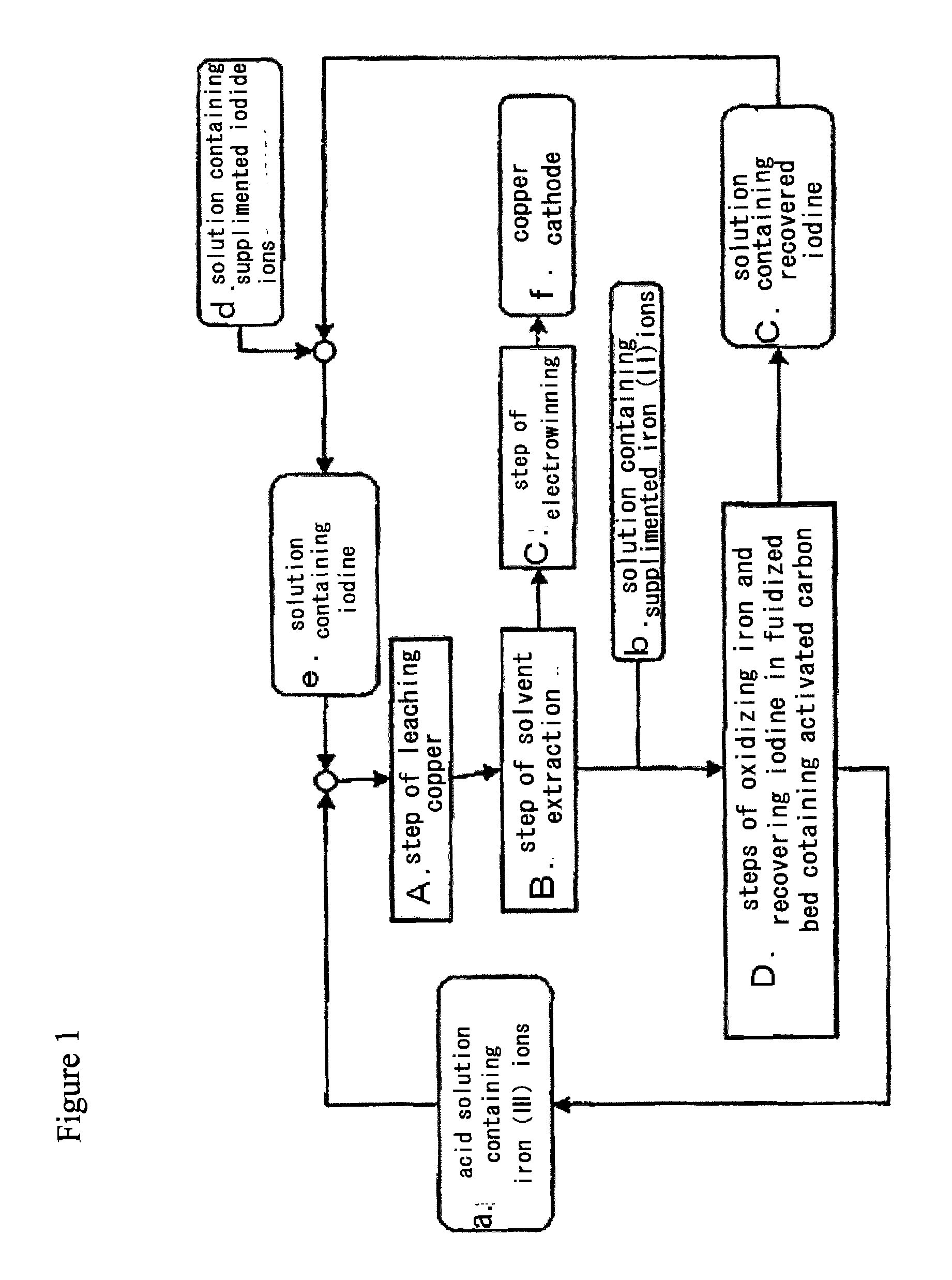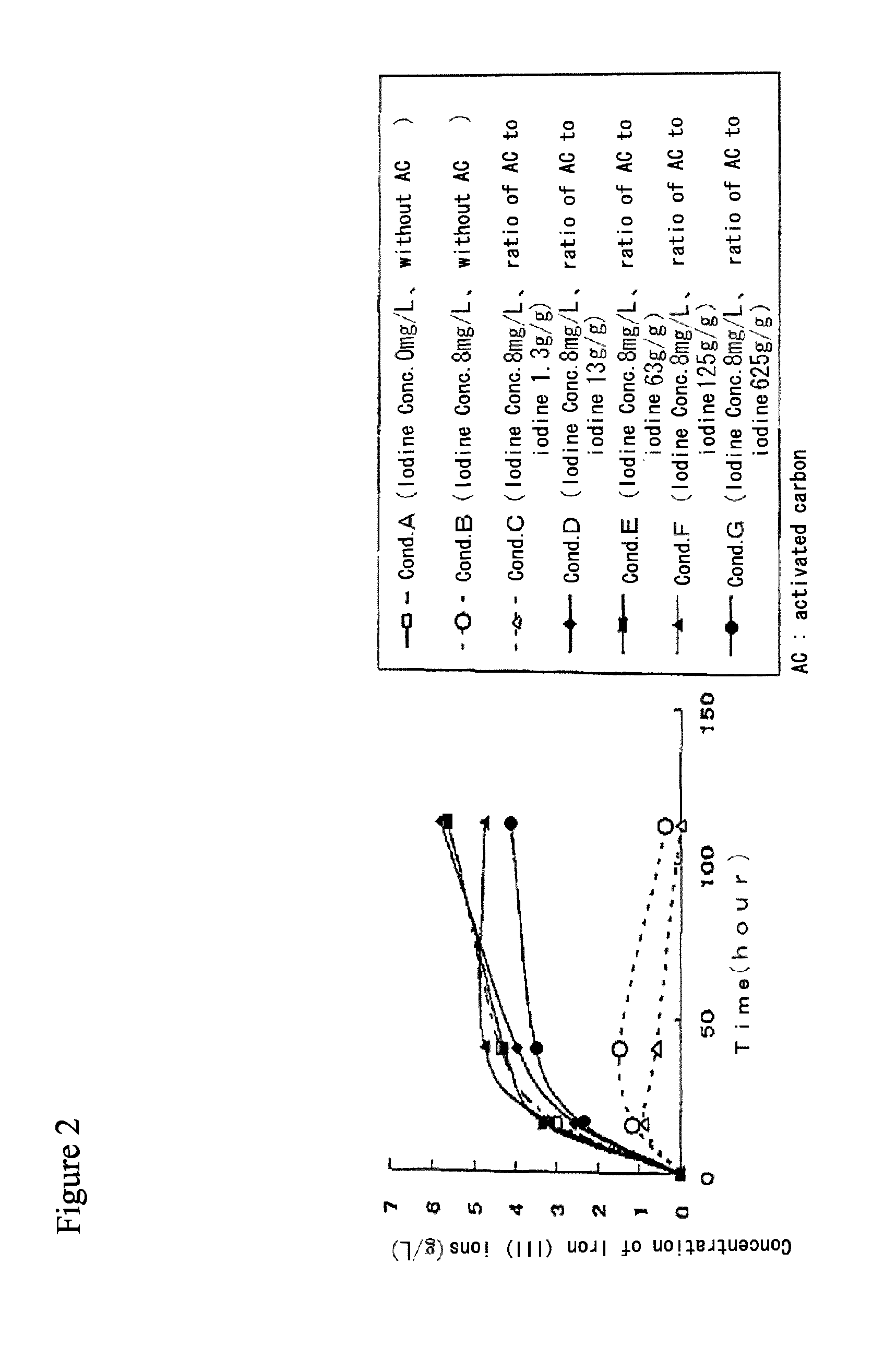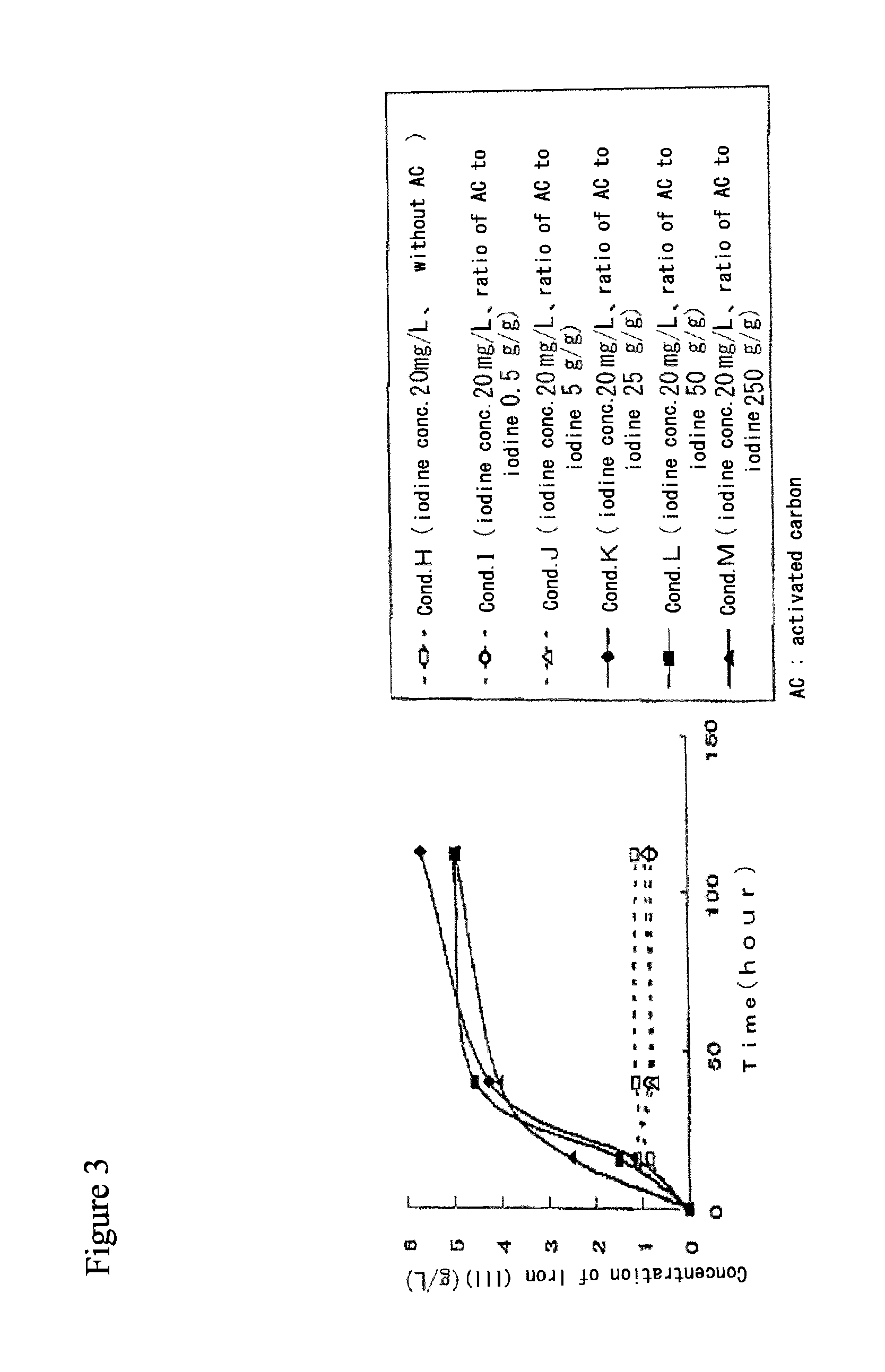Method for processing acidic solution that contains iodide ions and iron ions
a technology of iron ions and acidic solutions, which is applied in the direction of copper sulfates, dissolving, separation processes, etc., can solve the problems of high sterilizability of iodine ingredients, difficulty in regenerating iron (iii) ions with iron-oxidizing microorganisms in the presence of iodine ingredients, and different subject solutions for removing iodine ingredients, etc., to achieve efficient leaching of copper and low cos
- Summary
- Abstract
- Description
- Claims
- Application Information
AI Technical Summary
Benefits of technology
Problems solved by technology
Method used
Image
Examples
example 1
[0073]Production of iron (III) ions by iron-oxidizing microorganisms in the presence of activated carbon in solution containing iodide ions and iron (II) ions.[0074](1) 25 mL of the following solution was aliquoted into Erlenmeyer flask (50 mL Volume), of which pH was adjusted to 2.0 using sulfuric acid.
[0075]
Fe2+ 6 g / L(NH4)2SO4 3 g / LK2HPO40.1 g / LMgSO40.4 g / LCa(NO3)20.01 g / L [0076](2) Potassium iodide (KI) and activated carbon (Coconut Shell Mc (Taihei Chemical Industrial Co. Ltd.)) were added to reflect the conditions according the following table 1.[0077](3) After slightly stirring, iron-oxidizing microorganisms FTH6B was added such that its concentration was 2.5×106 cells / mL.[0078](4) The solution was moderately shaked at temperature 30° C. under atmospheric pressure to facilitate iron oxidization by iron-oxidizing microorganisms.
[0079]The concentrations of iron (II) ions in post microorganism treatment solution under respective conditions were determined by a redox titration m...
example 2
[0087]Recovery of iodine ingredients which are adsorbed into activated carbon in solution containing iodide ions and iron (II) ions in the presence of the activated carbon.[0088](1) 300 mL solution was introduced into sakaguchi flask (Volume 500 mL), wherein the solution contained 6 g / L of iron (II) ions and its composition was pursuant to Example 1 (1).[0089](2) Potassium iodide (KI) was added to be 25 mg / L and activated carbon was added to be 1 g / L.[0090](3) After slightly stirring, iron-oxidizing microorganisms FTH6B was added such that its concentration was 2.5×107 cells / mL.[0091](4) The solution was moderately shaked at temperature 30° C. under atmospheric pressure to facilitate iron oxidization by iron-oxidizing microorganisms.[0092](5) After the above microorganisms treatment, the solution is filtered and then precipitation including the activated carbon was recovered.[0093](6) The recovered precipitation was added with 100 mL of solution containing 24 mM sulfite acid (i.e. 2...
PUM
| Property | Measurement | Unit |
|---|---|---|
| concentration | aaaaa | aaaaa |
| concentration | aaaaa | aaaaa |
| concentration | aaaaa | aaaaa |
Abstract
Description
Claims
Application Information
 Login to View More
Login to View More - R&D
- Intellectual Property
- Life Sciences
- Materials
- Tech Scout
- Unparalleled Data Quality
- Higher Quality Content
- 60% Fewer Hallucinations
Browse by: Latest US Patents, China's latest patents, Technical Efficacy Thesaurus, Application Domain, Technology Topic, Popular Technical Reports.
© 2025 PatSnap. All rights reserved.Legal|Privacy policy|Modern Slavery Act Transparency Statement|Sitemap|About US| Contact US: help@patsnap.com



